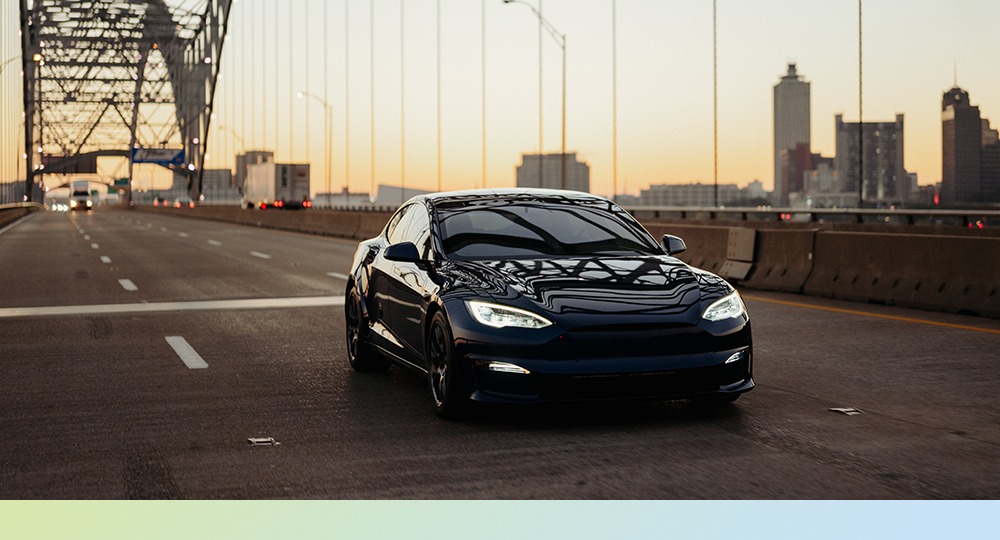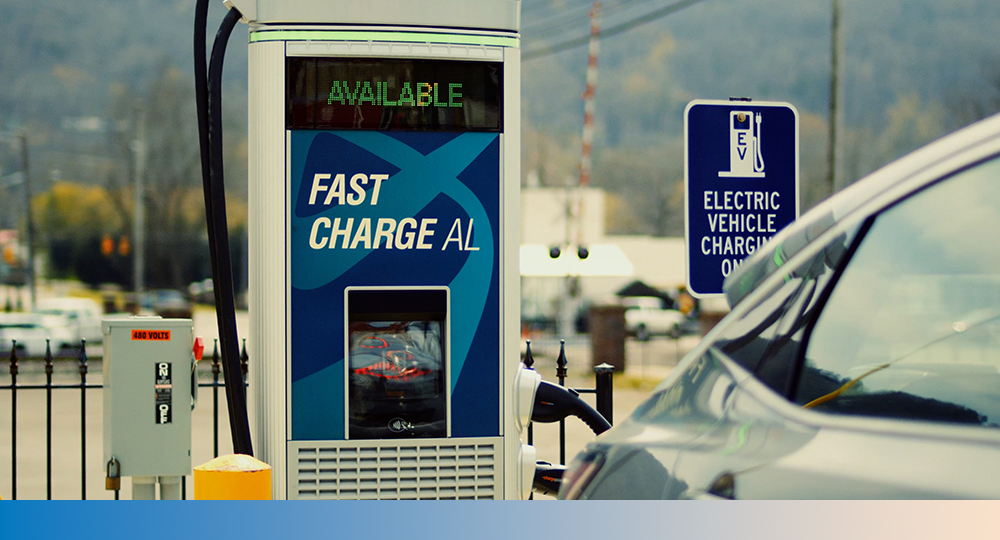Battery Basics: What’s the electric vehicle battery warranty? How do EV batteries work? Are EV batteries recyclable?

What you need to know about EV battery warranties, how EV batteries work, currents, kilowatts and more.
Have you ever wondered what the standard EV battery warranty is? Or how EV batteries work? Or how batteries in an electric car, boat or motorcycle can replace a gas-powered engine?
You’re not alone! Fortunately, you don’t need to know exactly how an internal combustion engine works in order to drive your car or motorcycle. If that were the case, there would be plenty of us looking for alternative modes of transportation.
Although we don’t necessarily need to know how EV batteries work, many of us not-so-secretly want to know. But first, let’s get that EV battery warranty question out of the way:
What’s the standard EV battery warranty?
Federal law mandates that manufacturers offer at least eight years or 100,000 miles of EV battery warranty coverage; however, some manufacturers offer a 10-year warranty.
SOURCE: Department of Energy, U.S. News & World Report
How does an EV battery actually work?
An electric vehicle – whether you’re talking about a truck, jet ski or bicycle – uses battery packs to store electrical energy to power the motor (or motors) connected to the wheels.
For your daily dose of trivia: The modern battery was invented by the Italian physicist Alessandro Volta in 1800 (Britannica).
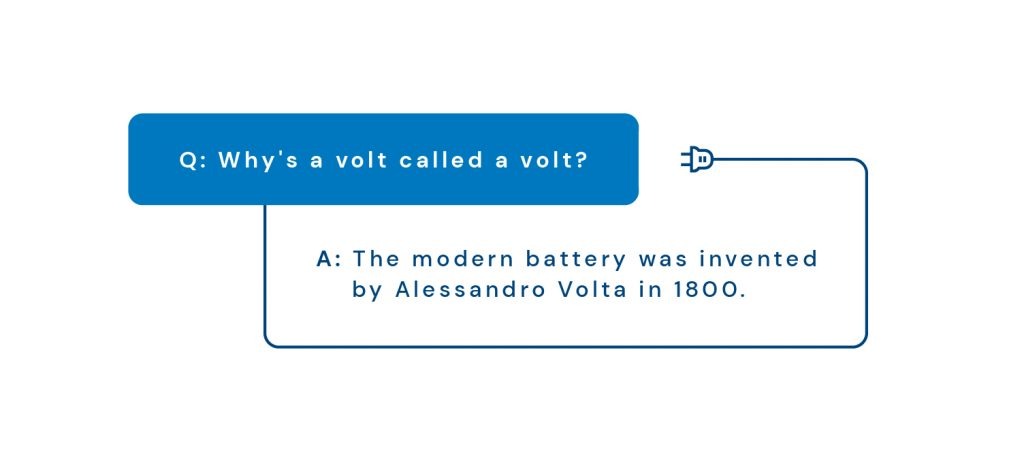
EV batteries are charged by plugging the EV charger’s cord into the vehicle’s charging port. They can also gain charge from regenerative braking systems. “Regen” braking systems are unique to EVs. They turn a vehicle’s kinetic energy (energy that relates to motion) back into electric energy. This transformation occurs during braking, deceleration or coasting downhill. Plus, these systems also dramatically reduce wear and tear on a vehicle’s braking system.
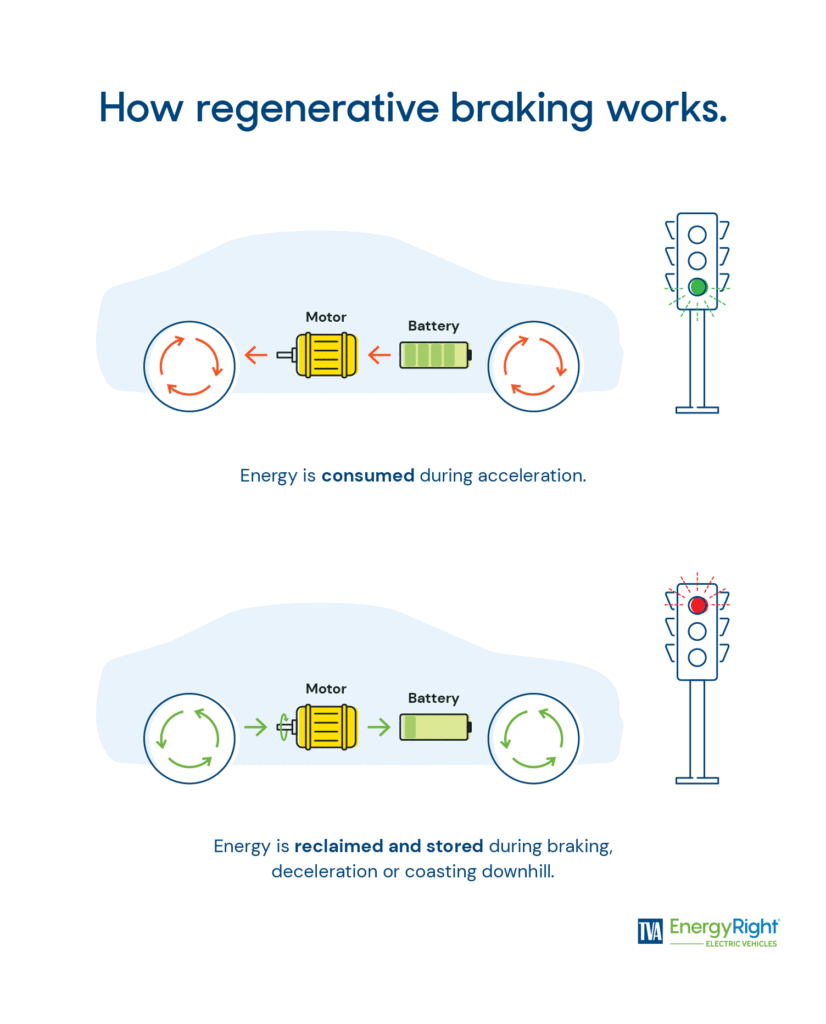
SOURCE: PC Mag, ScienceDirect.
What’s the AC/DC Deal?
Before we go too far down the charging path, let’s hit the basics: AC stands for alternating current. DC is short for direct current.
Alternating current describes the flow of electricity. Simply put: With AC, the direction of the current changes (alternates) direction every 60 seconds in the U.S. (energy.gov). The alternating current makes sending electricity over long distances (like from the power plant to your home) more efficient. AC is used in your home and at most commercial locations. AC powers Level 1 and Level 2 EV chargers.

Direct current provides constant voltage and the current flows in one direction. It doesn’t change or vary over time. DC powers EV fast chargers because the direct flow of current – delivered directly to the battery – can charge more quickly.
Do electric cars have different inlets for AC and DC chargers?
Some EVs have different charging ports for AC and DC connectors. Others use a Combined Charging System (CCS). The CCS is a combination of both plugs: The Level 1/Level 2 AC pins are on top and two additional DC pins are at the base to accommodate the higher electrical current. Check out the charger illustration below!
A kilowhat? Oh, a kilowatt!
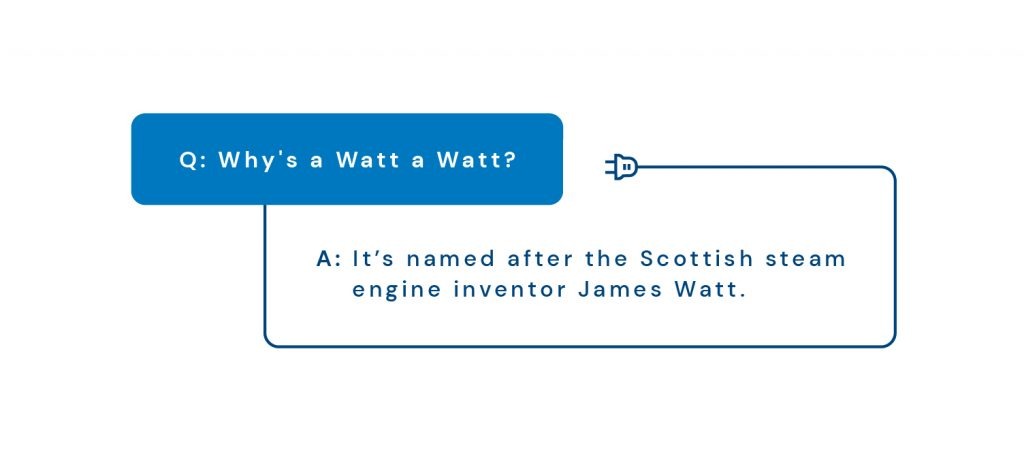
So what’s a kilowatt (kW) and why do kilowatt hours (kWh) matter?
A kW is 1,000 Watts, a unit of measure for power. Power tells us how fast energy is moving at any moment in time. A kWh tells you how many of those units are consumed in an hour.
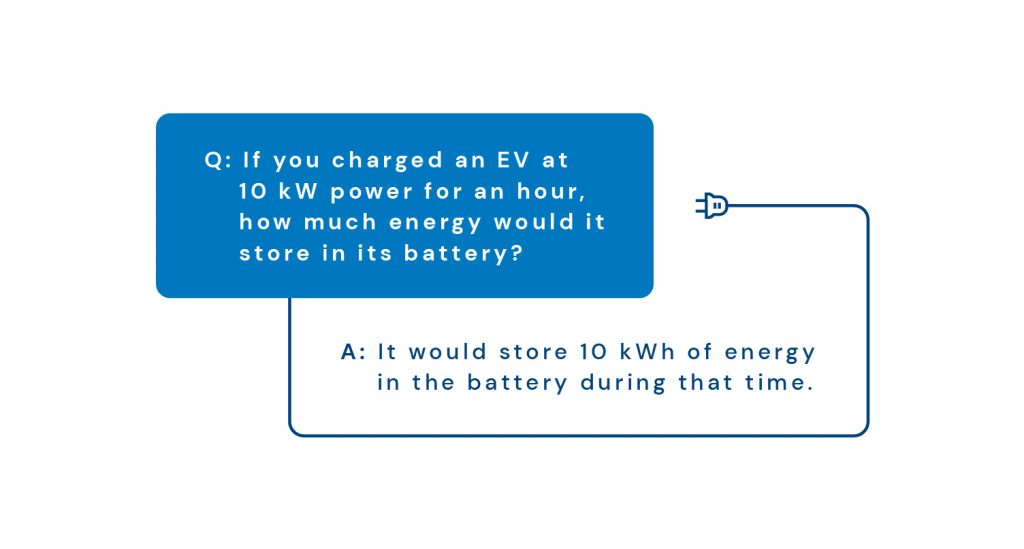
Kilowhy?
Why do we care about kilowatts and kilowatt hours? Because they can help tell us how much it will cost to charge an EV.

They also determine how quickly it can recharge. The higher the kW your car can accept, the faster it will charge. (More on this later!)
*Find miles per kWh for common EV makes and models here.
**Example CDE Lightband residential electricity rate as of November 2024.
What is EV battery capacity and why does it matter?
Craving another answer to kilowhy? Look no further than battery capacity, or the amount of energy that an electric vehicle’s battery pack can contain. This capacity is measured in kWh.
Battery capacity and EV range – how far a vehicle can go on a single charge – go hand in hand. Generally speaking, the greater the battery capacity (or the bigger the battery), the greater the range.
This is why some manufacturers offer different battery sizes. The Nissan LEAF, for example, currently offers two battery options. Their standard 40 kWh battery is EPA rated for up to 149 miles and the 60 kWh battery is EPA rated for up to 212 miles. The Ford Mach-E offers a 72 kWh standard battery and an optional 91 kWh extended-range battery.
Why do EV battery charging times vary?
Just as gas-powered cars and trucks have varying gas tank capacities, EV battery charging times may also vary depending on battery capacity and how much power is being delivered to the battery. Battery management systems in today’s EVs automatically manage charging variables to maximize charging speed, ensure safety and minimize battery degradation.
For more on charging, be sure to check out “Blow your mind (not fuses) with these top EV charging tips” and “How do I choose an electric vehicle that’s right for me?”
There are three basic levels of EV charging:
- Level 1: Also known as “slow chargers” or “trickle chargers,” Level 1 chargers can plug into any standard 120-volt home wall outlet, the very same type of outlet you use to plug in your cell phone or TV.
- Level 2: This is what most EV owners recommend for at-home charging. These 240-volt chargers are just like the ones your dryer plugs into and can charge an empty battery-only EV (BEV) in 4-10 hours.
- DC Fast Charging: These chargers are great for quick stops on long road trips and can fill up an empty battery in 20-60 minutes.
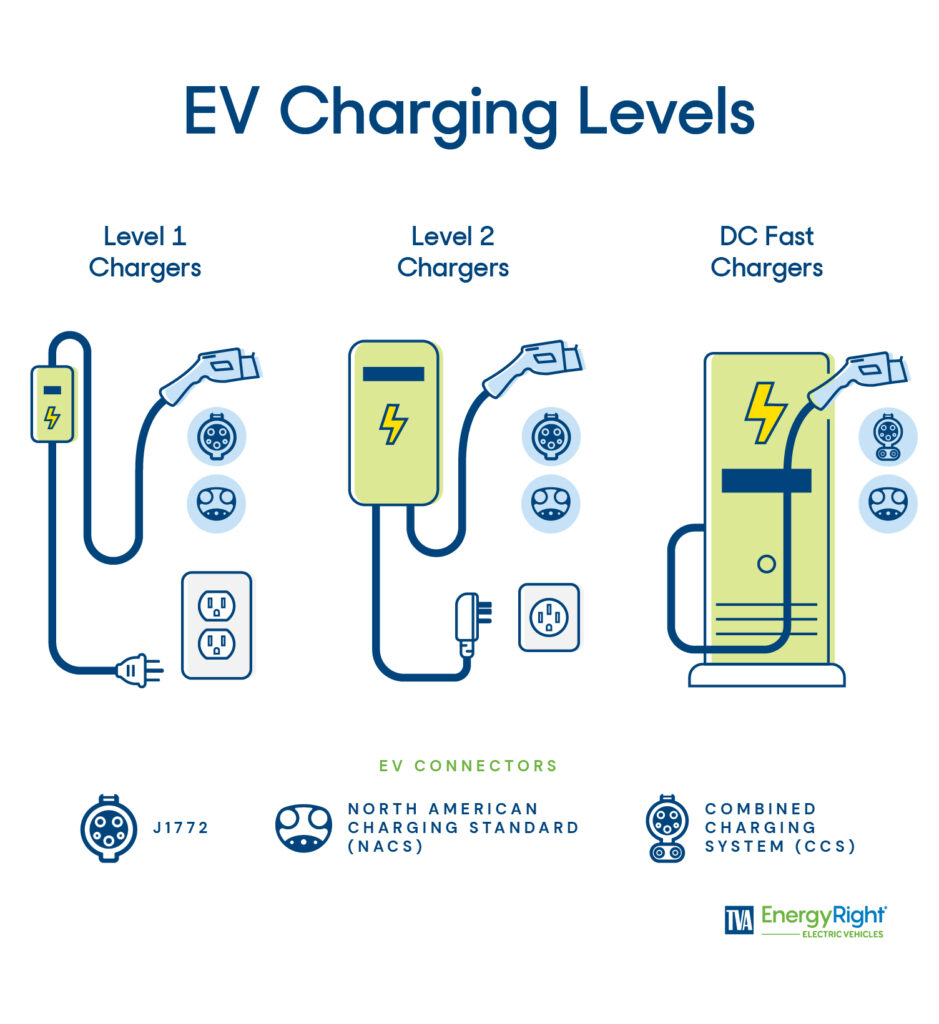
Looking for tips on getting the most out of your battery? Check out our post, “Do you know the answers to these 10 common questions about electric vehicles?”
SOURCE: U.S. Department of Transportation
What are the different types of batteries used in EVs?
Nickel metal hydride
Early EVs and some hybrids use durable nickel metal hydride batteries. However, these batteries are expensive, lose their charge more quickly than modern EV batteries and are inefficient at high temperatures.
Lithium-ion
This is what many EVs on the market today use. When compared to lead or nickel metal hydride batteries, they’re lighter and highly efficient.
Lead acid
Lead acid batteries, like those used to supply the electricity a gas-powered car needs to start, are not used in EVs because they’re heavy and more susceptible to extreme temperatures.
Solid-state
We’ll call these near future-state quick-charging batteries. They’re in development right now, but some manufacturers are planning to roll them out as early as 2027. Solid state batteries offer higher energy density, greatly extended range and faster charging times.
As some manufacturers continue to push projections on when solid-state batteries will be brought to market, there could also be another option: semi-solid-state batteries. These cells use a hybrid design of solid electrolyte and liquid electrolyte which could serve as a bridge as a transitional technology between the two types of batteries.
Source: GreenCars.com, PC Mag
Can I recycle EV batteries?
Yes! Well, your car’s manufacturer can. Although most EV car batteries on the road today aren’t ready for retirement, automotive manufacturers are already making plans for recycling and repurposing used EV batteries.
EV batteries contain valuable minerals like lithium, cobalt and nickel – all of which can be recycled, repurposed and reused.
According to U.S. News and World Report, Tesla recycles batteries on its own and Ford, Volkswagen, Toyota, Audi and Volvo have all partnered with Redwood Materials for battery recycling. Hyundai is working with UL Solutions to create battery energy storage systems from used EV batteries.
Are EV batteries safe?
EV batteries are designed with safety features to prevent overheating, fires and explosions. However, manufacturing defects, damage and improper charging can lead to battery fires. As with any vehicle defect, manufacturers may have to issue a recall to address safety concerns.
Poorly installed Level 2 chargers can also lead to safety concerns. The solution? Never use an extension cord to charge an EV and hire a licensed electrician with EV experience or is certified through a program like the Electric Vehicle Infrastructure Training Program (EVITP) to install safety-certified Level 2 EV charger.
Just as each model year brings new features to our favorite cars, trucks, motorcycles and ATVs, EV battery technology is constantly evolving. We’ll help you stay on top of the latest electrifying developments. Sign up to receive news and updates from the TVA EnergyRight EV team!
This site’s content (including, without limitation, references and links to third-party information) is based on information provided at the time of publishing, and TVA makes no warranty therein.

